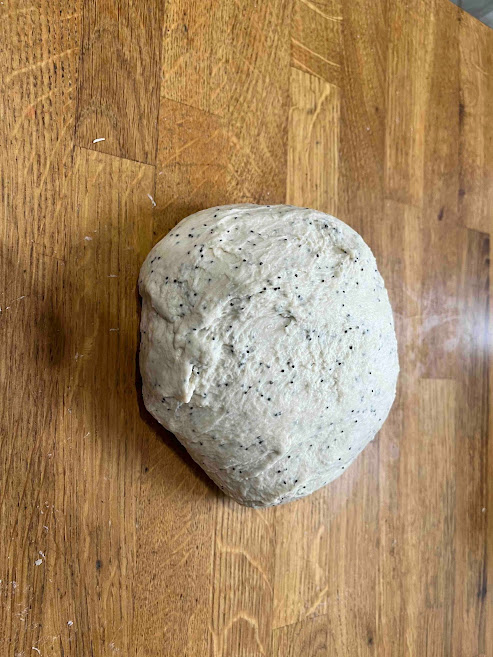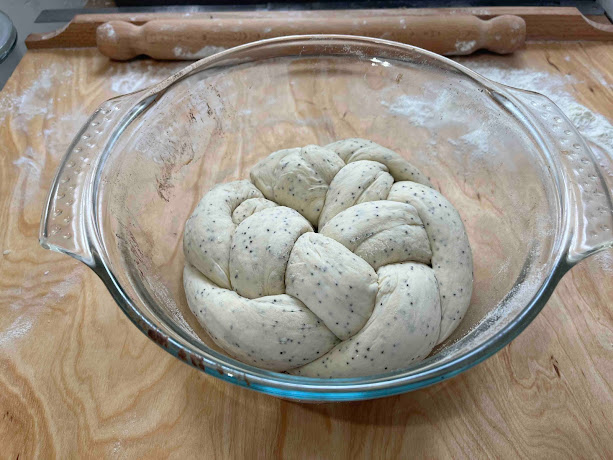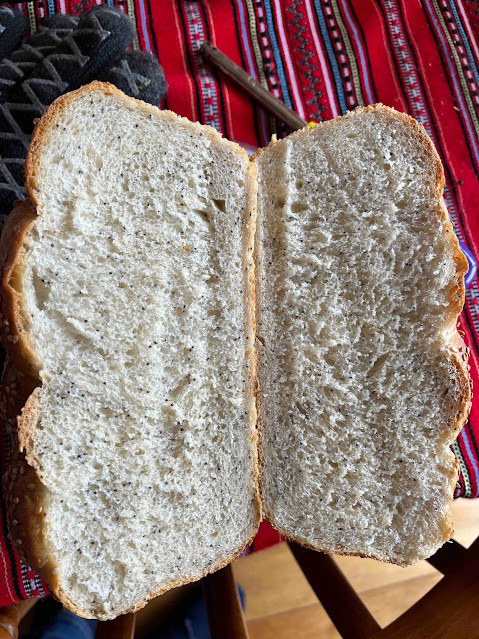Ukrainian Kolach (plain)
Welcome to another step-by-step recipe from BreadClub20. Why not drop by our main Facebook page by clicking here.... If you like what you see and enjoy the recipe, we hope you go on to join us by 'Liking' and 'Subscribing'.
The current situation in Ukraine (Day 14) is dreadful and horrendous. I'm trying to encourage everyone to bake for Ukraine, if only to keep the plight of our European cousins in the forefront of our minds and prayers.
Recently, I found a wonderful piece on YouTube - where a lady from the Ukrainian Cultural heritage Village made a non-enriched Kolach - a celebratory Ukrainian bread, very much a part of Christmas festivities.
I didn't want to lose the video, so I thought I'd use it as the basis of a BreadClub20 step-by-step recipe.
After all, it's great to watch it being made on a video - but can it be replicated perfectly in your own kitchen?
Before we hear a little more about Kolach, here's the video -
OK, back to Kolach. There are numerous references to kolach from as far away as Hungary and the Slavic states to Cedar Rapids Iowa. But, here, we're going to concentrate on Ukrainian kolach.
As a Christmas bread, most recipes are for an enriched slightly sweetened dough, comprising eggs, sugar, oil and with a glaze.
However, the recipe here is for a plain kolach using a basic bread dough.
This is my recipe for a basic bread dough - ideal for the 'rise' you need for Kolach
INGREDIENTS
500 gms strong white bread flour
320 mls of filtered water at room temperature
40 gms of olive or vegetable oil
10 gms crushed sea salt
7 gms instant active yeast
I'm also adding 1 tablespoon poppy seeds - because I like them!
Just a quick note here - this is a recipe for a single Kolach. If you want to make a traditional Christmas Kolache, you'll need to make three separate Kolach and stack them on top of each other, placing a candle in the middle. The second and third Kolache should be slightly smaller than each other and smaller than the first, so giving the impression of a tower. One way would be to make a second loaf and then divide it by ⅔ and ⅓. However, a lot depends on whether you have the right size baking tins / containers?
METHOD
If you are using a bread machine or a stand mixer - prepare the dough as you would normally. Alternatively, with a bread machine, use an instant start (pizza) setting and stop the machine when the dough is formed. Remove the dough and place in a lightly oiled bowl and allow it to rise for an hour or so in a warm environment. The same would be true if you were using a stand mixer.
1. Sift the flour into a bowl and add the salt and mix well.
2. Add the yeast and mix well
3. Combine the oil and the water and gradually mix it into the flour / salt / yeast until it has all combined.
4. Set aside for 30 minutes, covered.
5. Tip the mix out onto a work surface and knead until you have a soft and silky dough.
6. Place in a lightly-oiled bowl and place somewhere warm until it has doubled in volume.
7. Weigh the dough.
8. Divide the dough into three equal portions on a lightly-floured board.
9. Roll each portion out into a long 'sausage' - try to make each 'sausage' the same length.
10. Braid the dough portions together and then bring the ends together to form a 'round'.
11. Oil a suitably sized dish that will allow for the bread to expand.
12. Place the dough in the dish, cover and place somewhere warm for about an hour or until it has doubled in size.
13. Pre-heat the oven to 190⁰C.
If you wish you can glaze the top of the loaf and add further poppy seeds on the top.
14. Bake for 30 minutes or until the loaf is golden brown and hollow when tapped on the underneath.
Cool on a rack.
Happy baking.














Comments
Post a Comment